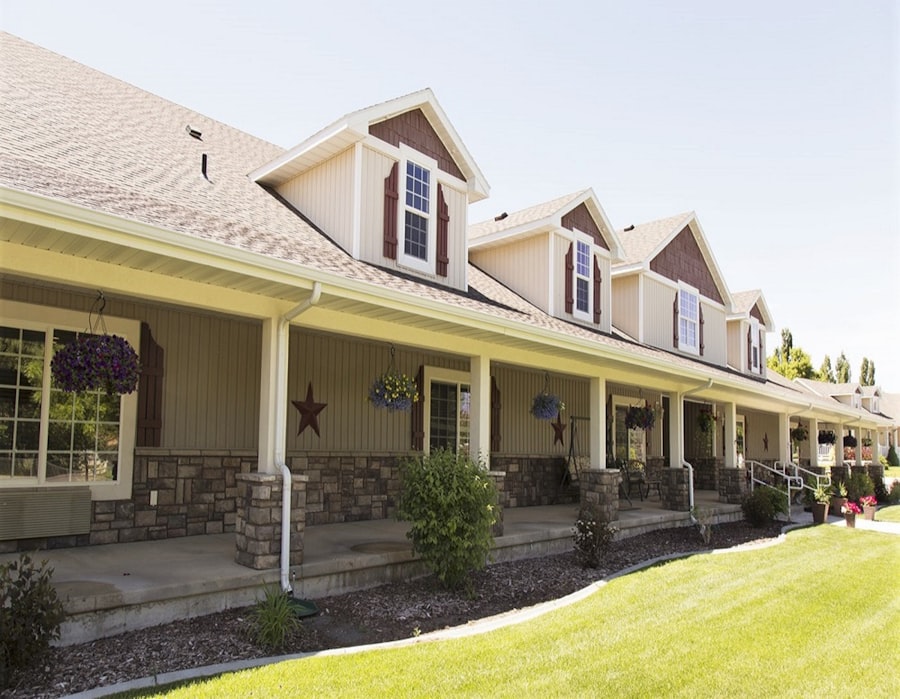Assisted living is a residential option designed for individuals who require assistance with daily activities but wish to maintain a degree of independence. This type of living arrangement typically caters to seniors who may struggle with tasks such as bathing, dressing, medication management, and meal preparation. Unlike nursing homes, which provide a higher level of medical care, assisted living facilities focus on enhancing the quality of life for residents by offering support in a more home-like environment.
The goal is to foster independence while ensuring that help is readily available when needed. The structure of assisted living facilities can vary significantly. Some may resemble traditional apartment complexes, while others might be more akin to small communities or houses.
Regardless of the physical layout, these facilities are designed to promote social interaction and engagement among residents. Many offer communal dining areas, activity rooms, and outdoor spaces, encouraging residents to participate in social activities and build relationships with their peers. This social aspect is crucial, as it helps combat feelings of isolation and loneliness that can often accompany aging.
Key Takeaways
- Assisted living provides support for seniors who need help with daily activities but still want to maintain independence.
- The benefits of assisted living include access to 24-hour care, social activities, and a safe living environment.
- When finding the right assisted living facility, consider the location, services offered, and the overall atmosphere of the community.
- The costs of assisted living can vary depending on the location, level of care needed, and amenities provided.
- Services and amenities offered in assisted living may include meal preparation, housekeeping, transportation, and recreational activities.
- Choosing the best location for assisted living involves considering proximity to family, medical facilities, and preferred climate.
- Transitioning to assisted living may require emotional support and assistance with downsizing and moving belongings.
- Making the most of assisted living involves participating in activities, building relationships with staff and other residents, and taking advantage of available resources.
Benefits of Assisted Living
One of the primary benefits of assisted living is the balance it strikes between independence and support. Residents can enjoy their own private living spaces while having access to assistance when necessary. This arrangement allows individuals to maintain their dignity and autonomy, which is often a significant concern for seniors transitioning from their own homes.
The presence of trained staff members ensures that help is available around the clock, providing peace of mind for both residents and their families. Another notable advantage is the variety of services offered in assisted living facilities. Many provide not only personal care assistance but also recreational activities, transportation services, and wellness programs.
These amenities contribute to a holistic approach to health and well-being, addressing not just physical needs but also emotional and social aspects of life. For instance, organized outings, exercise classes, and arts and crafts sessions can enhance residents’ quality of life, making their days more fulfilling and enjoyable.
Finding the Right Assisted Living Facility

Choosing the right assisted living facility is a critical decision that requires careful consideration. Families should begin by assessing the specific needs of their loved ones, including the level of care required and any particular preferences they may have regarding lifestyle and community atmosphere. It is essential to create a list of priorities that can guide the search process.
For example, some individuals may prioritize proximity to family members or specific medical facilities, while others might focus on the availability of particular activities or social programs. Once a list of potential facilities has been compiled, visiting each location is vital. In-person tours provide an opportunity to observe the environment, meet staff members, and interact with current residents.
During these visits, families should ask questions about staff-to-resident ratios, emergency procedures, and the types of activities offered. Additionally, it can be beneficial to speak with residents and their families to gain insight into their experiences within the community. This firsthand information can be invaluable in making an informed decision.
Costs of Assisted Living
| City | Monthly Cost | Annual Cost |
|---|---|---|
| New York | 4,500 | 54,000 |
| Los Angeles | 3,800 | 45,600 |
| Chicago | 4,200 | 50,400 |
| Houston | 3,600 | 43,200 |
The costs associated with assisted living can vary widely based on several factors, including location, facility amenities, and the level of care required. On average, monthly fees for assisted living can range from $2,500 to $6,000 or more. It is essential for families to understand what these fees cover; some facilities may include meals, housekeeping, and transportation in their pricing, while others may charge extra for these services.
Financial planning is crucial when considering assisted living options. Many families explore various payment methods, including private pay options such as personal savings or long-term care insurance policies. Additionally, some states offer financial assistance programs for low-income seniors that can help offset costs.
Understanding the full scope of expenses involved in assisted living is essential for families to make informed decisions that align with their financial situations.
Services and Amenities Offered in Assisted Living
Assisted living facilities typically offer a wide range of services designed to cater to the diverse needs of their residents. Personal care services often include assistance with activities of daily living (ADLs) such as bathing, grooming, dressing, and medication management. Many facilities also provide health monitoring services, ensuring that residents’ medical needs are addressed promptly and effectively.
In addition to personal care services, many assisted living communities offer various amenities that enhance residents’ quality of life. Common amenities include fitness centers, libraries, beauty salons, and communal dining areas where residents can enjoy meals together. Social activities such as game nights, movie screenings, and exercise classes are often organized to encourage engagement and foster a sense of community among residents.
These amenities not only provide practical support but also contribute to a vibrant social atmosphere that can significantly improve residents’ overall well-being.
Choosing the Best Location for Assisted Living

Selecting the right location for an assisted living facility is a crucial aspect of the decision-making process. Proximity to family members can play a significant role in this choice; being close to loved ones can provide emotional support for both residents and their families. Additionally, considering the local community’s resources is essential; access to healthcare facilities, shopping centers, parks, and cultural attractions can enhance residents’ quality of life.
Another factor to consider is the climate and environment of the area where the facility is located. Some individuals may prefer warmer climates that allow for outdoor activities year-round, while others might favor cooler regions with distinct seasonal changes. The overall safety and reputation of the neighborhood should also be taken into account; families should research crime rates and community resources to ensure a secure environment for their loved ones.
Transitioning to Assisted Living
Transitioning to assisted living can be a challenging experience for both seniors and their families. It often involves significant emotional adjustments as individuals leave behind familiar surroundings and routines. To ease this transition, open communication is vital; families should discuss the move with their loved ones well in advance, addressing any concerns or fears they may have about leaving their homes.
Involving seniors in the decision-making process can also help them feel more in control during this significant life change. Allowing them to participate in selecting the facility or even choosing how to decorate their new living space can foster a sense of ownership over their new environment. Additionally, many assisted living communities offer orientation programs designed to help new residents acclimate to their surroundings and meet fellow residents.
These programs can be instrumental in easing feelings of anxiety and promoting social connections from the outset.
Making the Most of Assisted Living
Once individuals have successfully transitioned into assisted living, it is essential for them to actively engage in their new community to maximize their experience. Encouraging participation in social activities can help foster friendships and create a sense of belonging among residents. Many facilities offer a variety of programs tailored to different interests; whether it’s joining a book club, participating in exercise classes, or attending cultural events, there are often numerous opportunities for engagement.
Additionally, maintaining connections with family members remains crucial even after moving into assisted living. Regular visits from loved ones can provide emotional support and reinforce familial bonds during this transition period. Families should also encourage their loved ones to share their experiences within the community; this open dialogue can help identify any concerns or needs that may arise as they settle into their new home.
By actively participating in both community activities and family interactions, residents can create a fulfilling lifestyle that enhances their overall well-being in assisted living settings.




